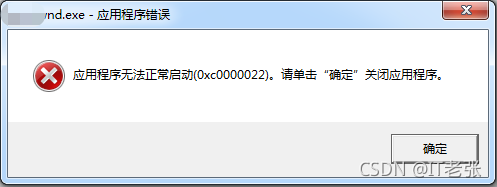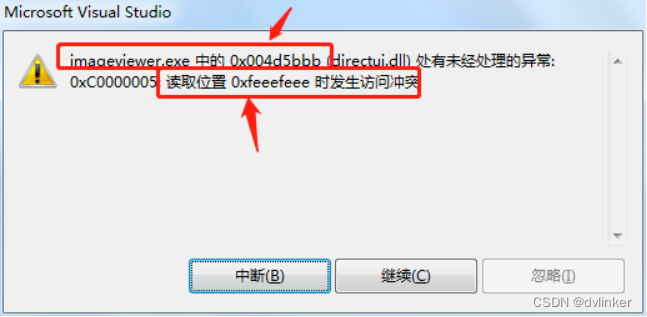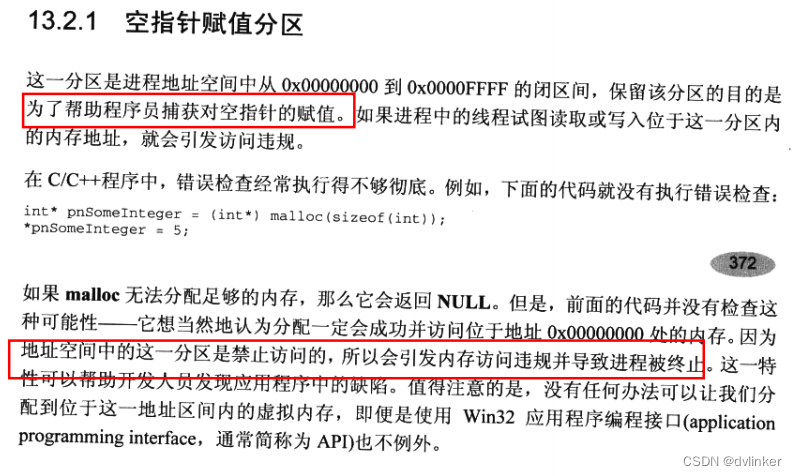作者:翟天保Steven
版权声明:著作权归作者所有,商业转载请联系作者获得授权,非商业转载请注明出处
实现原理
天空变换是图像分割的一种应用,把图像中的天空与非天空区分割开,结合掩膜将天空更改为其他图像。如何较优地实现天空变换,与识别证件照类似,难点在于两个:
- 天空分割。将图像转为HSV并对S和V通道进行直方图均衡化,再通过设定的HSV三通道阈值选定天空的颜色范围,进而提取天空区域(H为78-124,S为0-255,V为78-255,该参数为我大量测试后凭经验所设,考虑到图像多样性,函数我提供了参数接口以便动态调整);thresh为天空区域的掩膜图,反相后的thresh_为非天空区域掩膜图,接下来识别非天空区的轮廓区域,采用外部轮廓方式,这样能提取出多个轮廓区,保留最大的轮廓区,不出意外这个就是前景区(出意外就自己重写该部分代码来判断真实的前景区);然后闭运算填充轮廓区内部微小孔洞,注意这个参数越大,轮廓越完整,但代价是一些孔洞处没法进行图像更换,所以自己把握参数;进行均值滤波,这一步是为了边缘平滑,为后续新天空和非天空区的融合作铺垫;输出Foreground,该掩膜图255的区域为非天空区。
- 两区域边缘融合。如果不能很好地融合,就能看出明显的抠图痕迹,所以融合是很关键的一步。首先,将新天空图尺寸调整为原图尺寸;其次,对蒙版区(掩膜)进行均值滤波,其边缘区会生成介于0-255之间的缓存区;再通过比例分配的方式对缓存区的像素点上色,我固定的比例为前景0.3天空0.7,可以使得缓存区颜色倾向于天空色,且实现较好地过渡;最后,蒙版为0的区域为新天空图,蒙版为255的区域不变。
至此,完成了天空变换。C++实现代码如下。
功能函数代码
// 天空分离
cv::Mat SkySeparation(cv::Mat src, Inputparama input)
{
// 异常数值修正
input.low_h = max(uchar(0), min(uchar(255), input.low_h));
input.high_h = max(uchar(0), min(uchar(255), input.high_h));
input.low_s = max(uchar(0), min(uchar(255), input.low_s));
input.high_s = max(uchar(0), min(uchar(255), input.high_s));
input.low_v = max(uchar(0), min(uchar(255), input.low_v));
input.high_v = max(uchar(0), min(uchar(255), input.high_v));
input.close_size= max(0, min(10, input.close_size));
input.blur_size = max(0, min(10, input.blur_size));
// 转为hsv通道
cv::Mat hsv,nhsv,thresh;
cvtColor(src, hsv, COLOR_BGR2HSV);
vector<cv::Mat> hsvs;
split(hsv, hsvs);
cv::Mat h,s,v;
// 直方图均衡化
equalizeHist(hsvs[1], s);
equalizeHist(hsvs[2], v);
hsvs[1] = s.clone();
hsvs[2] = v.clone();
merge(hsvs, nhsv);
// 按天空色选出mask并反相
cv::Mat low=(cv::Mat_<uchar>{ input.low_h, input.low_s, input.low_v });
cv::Mat high = (cv::Mat_<uchar>{ input.high_h, input.high_s, input.high_v });
inRange(nhsv, low, high, thresh);
cv::Mat thresh_ = 255 - thresh;
// 寻找轮廓,找出最大轮廓作为前景图
vector<vector<Point>> contour;// , ncontour;
vector<Vec4i> hierarchy;
findContours(thresh_, contour, hierarchy, RETR_EXTERNAL, CHAIN_APPROX_NONE);
cv::Mat Foreground=thresh_.clone();
if (!contour.empty() && !hierarchy.empty())
{
int max = 0;
std::vector<std::vector<cv::Point> >::const_iterator itc = contour.begin();
std::vector<std::vector<cv::Point> >::const_iterator itmax;
// 遍历所有轮廓
int i = 1;
while (itc != contour.end())
{
double area = cv::contourArea(*itc);
if (area > max)
{
itmax = itc;
max = area;
}
itc++;
}
for (auto it = contour.begin(); it != contour.end(); it++)
{
if (it!=itmax)
{
cv::Rect rect = cv::boundingRect(cv::Mat(*it));
for (int i = rect.y; i < rect.y + rect.height; i++)
{
uchar *output_data = Foreground.ptr<uchar>(i);
for (int j = rect.x; j < rect.x + rect.width; j++)
{
// 将连通区的值置0
if (output_data[j] == 255)
{
output_data[j] = 0;
}
}
}
}
}
}
// 闭运算
cv::Mat element = getStructuringElement(MORPH_ELLIPSE, Size(2*input.close_size+1, 2 * input.close_size + 1));
cv::morphologyEx(Foreground, Foreground, MORPH_CLOSE, element);
// 滤波
cv::blur(Foreground, Foreground, Size(2 * input.blur_size + 1, 2 * input.blur_size + 1));
return Foreground;
}C++测试代码
#include <iostream>
#include <opencv2/opencv.hpp>
#include <time.h>
using namespace std;
using namespace cv;
// 输入参数
struct Inputparama {
uchar low_h = 78; // 识别天空区域hsv颜色的最底H值
uchar high_h = 124; // 识别天空区域hsv颜色的最高H值
uchar low_s = 0; // 识别天空区域hsv颜色的最底S值
uchar high_s = 255; // 识别天空区域hsv颜色的最高S值
uchar low_v = 78; // 识别天空区域hsv颜色的最底V值
uchar high_v = 255; // 识别天空区域hsv颜色的最高V值
int close_size = 4; // 非天空区域闭运算尺寸,该值越大则区域越完整,代价是一些孔洞处没法进行图像更换
int blur_size = 2; // 非天空区域滤波窗口尺寸,该值越大则天空与非天空区衔接处越模糊,适当的数值可以带来较优的融合效果
};
cv::Mat SkySeparation(cv::Mat src, Inputparama input);
cv::Mat ImageFusion(cv::Mat src1, cv::Mat src2, cv::Mat mask);
int main()
{
cv::Mat src = imread("test3.jpg");
cv::Mat sky = imread("sky5.jpg");
Inputparama input;
input.low_h = 78;
input.high_h = 124;
input.low_s = 0;
input.high_s = 255;
input.low_v = 78;
input.high_v = 255;
input.close_size = 4;
input.blur_size = 2;
clock_t s, e;
s = clock();
cv::Mat thresh = SkySeparation(src,input);
cv::Mat result = ImageFusion(src, sky, thresh);
e = clock();
double dif = (e - s) / CLOCKS_PER_SEC;
cout << "time:" << dif << endl;
imshow("original", src);
imshow("result", result);
waitKey(0);
return 0;
}
// 天空分离
cv::Mat SkySeparation(cv::Mat src, Inputparama input)
{
// 异常数值修正
input.low_h = max(uchar(0), min(uchar(255), input.low_h));
input.high_h = max(uchar(0), min(uchar(255), input.high_h));
input.low_s = max(uchar(0), min(uchar(255), input.low_s));
input.high_s = max(uchar(0), min(uchar(255), input.high_s));
input.low_v = max(uchar(0), min(uchar(255), input.low_v));
input.high_v = max(uchar(0), min(uchar(255), input.high_v));
input.close_size= max(0, min(10, input.close_size));
input.blur_size = max(0, min(10, input.blur_size));
// 转为hsv通道
cv::Mat hsv,nhsv,thresh;
cvtColor(src, hsv, COLOR_BGR2HSV);
vector<cv::Mat> hsvs;
split(hsv, hsvs);
cv::Mat h,s,v;
// 直方图均衡化
equalizeHist(hsvs[1], s);
equalizeHist(hsvs[2], v);
hsvs[1] = s.clone();
hsvs[2] = v.clone();
merge(hsvs, nhsv);
// 按天空色选出mask并反相
cv::Mat low=(cv::Mat_<uchar>{ input.low_h, input.low_s, input.low_v });
cv::Mat high = (cv::Mat_<uchar>{ input.high_h, input.high_s, input.high_v });
inRange(nhsv, low, high, thresh);
cv::Mat thresh_ = 255 - thresh;
// 寻找轮廓,找出最大轮廓作为前景图
vector<vector<Point>> contour;// , ncontour;
vector<Vec4i> hierarchy;
findContours(thresh_, contour, hierarchy, RETR_EXTERNAL, CHAIN_APPROX_NONE);
cv::Mat Foreground=thresh_.clone();
if (!contour.empty() && !hierarchy.empty())
{
int max = 0;
std::vector<std::vector<cv::Point> >::const_iterator itc = contour.begin();
std::vector<std::vector<cv::Point> >::const_iterator itmax;
// 遍历所有轮廓
int i = 1;
while (itc != contour.end())
{
double area = cv::contourArea(*itc);
if (area > max)
{
itmax = itc;
max = area;
}
itc++;
}
for (auto it = contour.begin(); it != contour.end(); it++)
{
if (it!=itmax)
{
cv::Rect rect = cv::boundingRect(cv::Mat(*it));
for (int i = rect.y; i < rect.y + rect.height; i++)
{
uchar *output_data = Foreground.ptr<uchar>(i);
for (int j = rect.x; j < rect.x + rect.width; j++)
{
// 将连通区的值置0
if (output_data[j] == 255)
{
output_data[j] = 0;
}
}
}
}
}
}
// 闭运算
cv::Mat element = getStructuringElement(MORPH_ELLIPSE, Size(2*input.close_size+1, 2 * input.close_size + 1));
cv::morphologyEx(Foreground, Foreground, MORPH_CLOSE, element);
// 滤波
cv::blur(Foreground, Foreground, Size(2 * input.blur_size + 1, 2 * input.blur_size + 1));
return Foreground;
}
// 前景背景融合
cv::Mat ImageFusion(cv::Mat src1, cv::Mat src2, cv::Mat mask)
{
cv::Mat sky;
resize(src2, sky, Size(src1.cols, src1.rows));
cv::Mat result = src1.clone();
int row = src1.rows;
int col = src1.cols;
// 改色
for (int i = 0; i < row; ++i)
{
uchar *s1 = result.ptr<uchar>(i);
uchar *s2 = sky.ptr<uchar>(i);
uchar *m = mask.ptr<uchar>(i);
for (int j = 0; j < col; ++j)
{
// 蒙版为0的区域就是标准背景区
if (m[j] == 0)
{
s1[3 * j] = s2[3 * j];
s1[3 * j + 1] = s2[3 * j + 1];
s1[3 * j + 2] = s2[3 * j + 2];
}
// 不为0且不为255的区域是轮廓区域(边缘区),需要虚化处理
else if (m[j] != 255)
{
// 边缘处按比例上色
int newb = (s1[3 * j] * m[j] * 0.3 + s2[3 * j] * (255 - m[j])*0.7) / ((255 - m[j])*0.7 + m[j] * 0.3);
int newg = (s1[3 * j + 1] * m[j] * 0.3 + s2[3 * j + 1] * (255 - m[j])*0.7) / ((255 - m[j])*0.7 + m[j] * 0.3);
int newr = (s1[3 * j + 2] * m[j] * 0.3 + s2[3 * j + 2] * (255 - m[j])*0.7) / ((255 - m[j])*0.7 + m[j] * 0.3);
newb = max(0, min(255, newb));
newg = max(0, min(255, newg));
newr = max(0, min(255, newr));
s1[3 * j] = newb;
s1[3 * j + 1] = newg;
s1[3 * j + 2] = newr;
}
}
}
return result;
}测试效果




如源码所示,函数输入参数共有5项,其说明如下:
- 前6个参数分别为hsv三通道的最大最小值。
- close_size为闭运算尺寸,如果处理的图像中有小树林,建议尺寸调小,不然小树林间的缝隙就是原图,有点不协调。
- blur_size为滤波窗口尺寸,平滑天空与非天空区衔接处。
总的来说,图像如果有明显天空背景,基本都能成功;天空白色区域过多可能识别不准,因为白色的hsv值和蓝色差太多;天空下面有大片海水,也不太行,就识别出来不符合现实逻辑。
源码只有100多行,看懂原理最重要,比直接调用api更能学到知识。永远记住,“代码是死的,场景是多变的,而人是活的。”,针对不同场景,合理改写代码,才能产出最适合你的代码。
如果函数有什么可以改进完善的地方,非常欢迎大家指出,一同进步何乐而不为呢~
如果文章帮助到你了,可以点个赞让我知道,我会很快乐~加油!
© 版权声明
文章版权归作者所有,未经允许请勿转载。
THE END














暂无评论内容